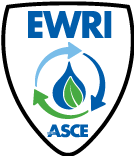American Society of Civil Engineers (ASCE) Manual of Practice (MOP) 150, titled “Total Maximum Daily Load Development and Implementation: Models, Methods, and Resources,”* focused on the state of the practice for common pollutants of concern in watershed and water quality modeling (e.g., nutrients and sediments). As contaminants of emerging concern (CECs) (or constituents of emerging concern) are increasingly being detected at low levels in surface waters, there are concerns that these compounds may have an impact on receiving waters and aquatic life. One specific group of CECs that has received widespread attention is per- and poly-fluorinated substances (PFASs). This is one of the current knowledge gaps identified for watershed modeling and affiliated water quality modeling after the publication of ASCE MOP 150.
To further advance the watershed and water quality modeling practices, the TMDL Analysis and Modeling Task Committee took a forward-looking view and proactive approach to PFAS modeling, which is to synthesize the model advancements in simulating PFASs to date and recommend the future research needs in the context of holistic watershed management. This collaborative team effort resulted in a paper titled “Advances and Research Gaps for PFAS Modeling in Watersheds and Receiving Waters”**. In addition to a concise summary of PFAS source assessment, this paper has provided example applications of PFAS watershed and receiving water modeling across geographic regions.
In summary, advances in watershed and receiving water models can facilitate the modeling of PFASs in support of water quality-based decision making. The state of the practice for modeling PCBs and other complex pollutants can be followed as a suitable starting point. Regarding research gaps, many process formulations for PFAS modeling are still empirical in nature and need additional rigorous evaluations for real-world modeling applications.
*ASCE-EWRI TMDL Analysis and Modeling Task Committee. 2022. Total maximum daily load development and implementation: Models, methods, and resources. ASCE manuals and reports on engineering practice no. 150, edited by H. X. Zhang, N. W. T. Quinn, D. K. Borah, and G. Padmanabhan. Reston, VA: ASCE. https://doi.org/10.1061/9780784415948.
**Zhang, H. X., Babbar-Sebens, M., Ahmadisharaf, E., Camacho-Rincon, R. A., Imen S. 2025. Advances and Research Gaps for PFAS Modeling in Watersheds and Receiving Waters. Journal of Environmental Engineering. Volume 151, Issue 11, November 2025. https://doi.org/10.1061/JOEEDU.EEENG-8137.


